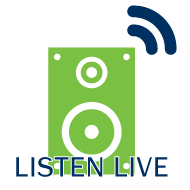From FEMA:
New Process: FEMA Remote Home Inspections after Hurricane Laura
Due to COVID-19 and the need to protect the safety and health of all Americans, FEMA will conduct remote home inspections for Hurricane Laura applicants in Louisiana. Remote inspections provide a new way of evaluating damage – comparable to traditional, in-person inspections – and expedite the delivery of recovery assistance to applicants based on their eligibility.
What to Expect After Applying for FEMA Assistance
A remote inspection will be the primary form of inspection for applicants who are still pending an inspection. Applicants who self-reported during registration that they received minimal damage and can live in their homes will not automatically be scheduled for a home inspection. Instead, they will receive a letter from FEMA explaining that they may call the FEMA helpline at 800-621-3362 or
TTY 800-462-7585 to request an inspection if they find significant disaster-caused damage to their home after they applied. Applicants who use 711-Relay or Video Relay Services may call 800-621-3362.
Keep Contact Information Updated so FEMA Can Schedule Inspection
Part of the FEMA disaster assistance registration process includes providing a callback phone number for FEMA to contact the applicant to set up a remote home inspection for damage caused by the disaster and other helpline information. It is important to call the helpline number and update the contact information if it changes. Applicants may also update contact information online at disasterassistance.gov or by downloading the FEMA app.
Applicants who use a relay service, such as InnoCaption or CapTel, should provide their specific number assigned to that service. It is important that FEMA can contact them. Applicants should be aware phone calls from FEMA may come from an unidentified number.
Remote Inspection Process
Disaster applicants who applied to FEMA and reported that they may not or cannot live at home due to damage will be contacted by FEMA to schedule a remote inspection.
FEMA advises evacuated applicants to return to their property only when local officials say it’s safe to do so. FEMA remains committed to completing home inspections for every applicant whose situation necessitates one.
FEMA inspectors will call applicants by phone. Applicants will answer questions about the type and extent of damage sustained.
The inspector will ask applicants to verify the last four digits of their FEMA registration ID, a 9-digit number given to them after applying. The inspector will complete the verification process by confirming the first 4-digits of the registration ID.
Applicants should let FEMA know if they need reasonable accommodations, including translation and ASL interpreters, to ensure effective communication.
Based on an applicant’s responses and existing eligibility criteria, FEMA may then provide grants for rental assistance, home repairs and replacing certain personal property items.
Home repair grants are provided based on the type of residence and the applicant’s responses during the remote inspection. FEMA assistance is limited to making essential repairs to make certain areas of a home livable. Those areas include the living room, kitchen, bathroom and currently occupied bedrooms.
Remote inspections have no impact on eligibility for the types of Other Needs Assistance available that do not require an inspection. This assistance includes childcare, transportation, medical and dental, funeral expenses, moving and storage and Group Flood Insurance Policy Assistance.












